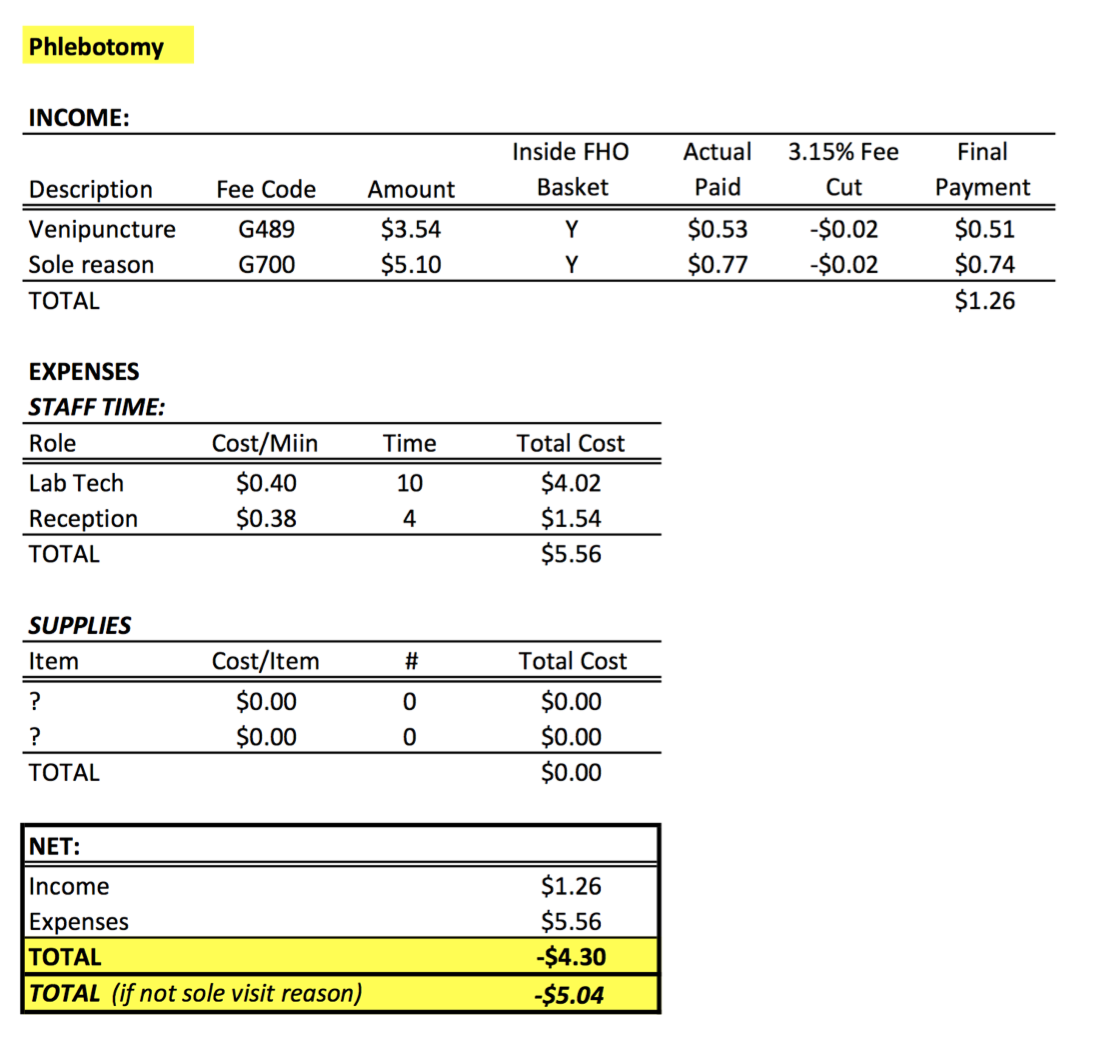In 2012, the Ontario Liberal Government made changes to health care funding that resulted in cuts to providing blood work services for patients in doctors’ offices.
These cuts continue to harm RURAL family physicians and patients.
Typically, when a patient has blood work drawn at a doctor’s office, the physician bills OHIP two codes:
(i) a G489 code for $3.54, which is for the actual procedure
(ii) a G700 code for $5.10, which is a code that can be added on if the patient is solely there for blood work that day. (i.e. the patient does not also see the doctor that day). The G700 code is meant to offset the administrative and staff costs for booking the patient and having the patient come into the clinic because the $3.54 on its own would not be enough to cover these costs. If the patient was also seeing the doctor the same day, the doctor would also be billing an assessment code, so the G700 is not applicable.
It gets a little more complicated, though. Many family doctors are in “Capitated Payment models” these days. They practice in groups such as FHO’s or FHN’s. These payment models mainly pay a flat rate for looking after a patient for the year. On top of that, the physician still bills OHIP codes for every service they provide, but they typically only receive 15% of the full rate for this (because the doctor is already being paid the flat rate). Think of it as “salary plus a bit of commission.” Most of the typical codes all fall into the “basket of services” that are covered under the flat rate. The G489 code, for example, was part of the flat rate services, so when a FHO doctor bills the G489, she/he is only paid 15% of that ($0.53).
However, the G700 used to be a code outside the flat rate basket of services, so even FHO doctors got paid the full $5.10 each time they billed it.
So up until 2012, a FHO doctor could typically bill OHIP a total $5.63 per blood work ($0.53 + $5.10).
In 2012, though, the Ontario Liberals made the decision to include the G700 code inside the flat rate basket of services. Therefore, now when FHO doctors bill a G700, it only pays the 15% portion ($0.77). So ever since 2012, FHO doctors only generate $1.30 ($0.53 + $0.77) per blood draw.
It costs at least $5.56 per blood draw (in staff time) at our clinic in Madoc. This is not to mention the costs of any supplies.
On top of that, since 2014 the Ontario Liberals have unilaterally cut 3.15% across the board to all OHIP codes.
Given all of the above numbers, here is an image that summarizes the costs versus payment of drawing blood work at a doctor’s office:
Every time draw blood work is done at the clinic, it costs the physicians $4-5, even after being paid by OHIP payments.
Our phlebotomist draws bloodwork nearly 7000 times per year. Multiply that by an average cost of $4.50 each, and that means the Madoc physicians paid over $31,500 out of their own pockets each year to provide blood work to the local community – a service that should be fully funded by the government.
Now, one could reasonably argue that the FHO doctors are already getting paid a flat rate to provide comprehensive care to their patients. This is true. However, this is where the rural versus urban distinction comes into play. Since there is no obligation for FHO doctors to provide any particular service, urban FHO doctors can simply stop drawing blood work at their clinics (which would also free up a tremendous amount of administrative and staff time). The urban patients still have the option of going to a local lab five minutes down the road, because they live in an urban city; whereas our rural patients do not have that option. If we did not provide bloodwork at our clinic, then our patients would have to drive at least 45 minutes (1.5 hours round trip, plus gas) each and every time they need blood work. Many rural patients cannot afford the time nor the money to do so. This is even a safety concern because many patient need their bloodwork monitored frequently.
We are not alone in Madoc and Marmora, either. This issue affects all rural family doctors and patients across the province.
This is an incredibly impactful issue that has gone unaddressed for far too long, despite our many pleas to the Ontario Government.
— Dr. Adam Stewart
September 8, 2016 (updated February 3, 2017)
For even more information on the Ontario Government’s cuts to health care over the last few years, please visit My Page on Key Links.

